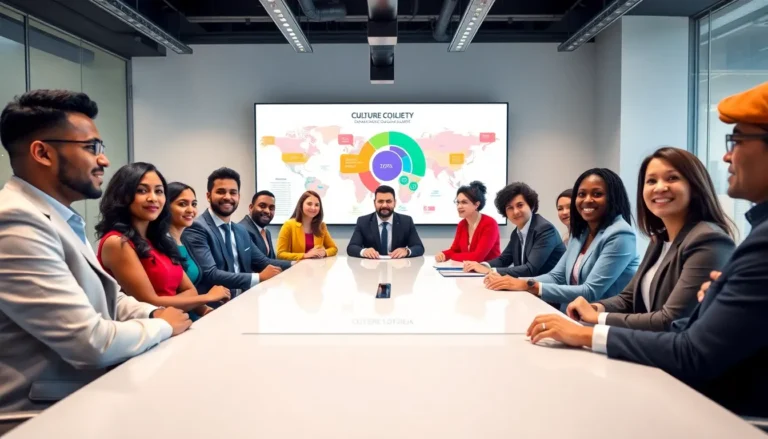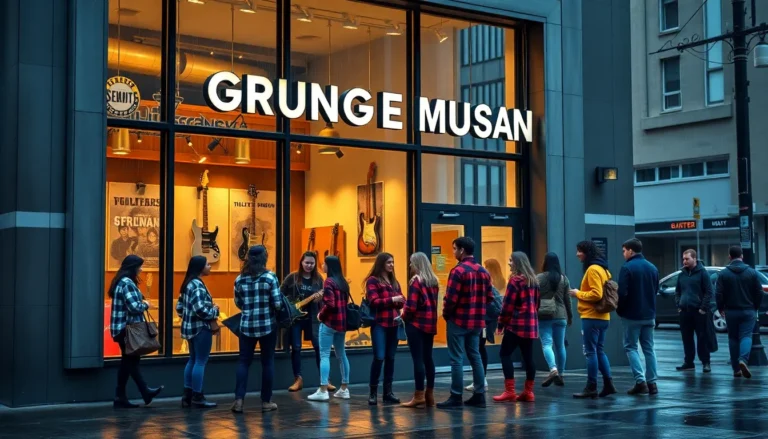Pop culture is like that one cousin everyone wants at family gatherings, always exciting, incredibly relatable, and sometimes just a bit unpredictable. From sparkling memes to chart-topping hits, it reflects our society’s evolving tastes, values, and quirks. Let’s jump into the vibrant world of pop culture, exploring how it’s formed, what influences it today, and where it’s headed. Buckle up, because this ride’s about to get fascinating.
Table of Contents
ToggleThe Evolution of Pop Culture

Pop culture has transformed dramatically over the decades. It started with local traditions and community gatherings, evolving into a global phenomenon influenced by technology and widespread media. The 1950s saw the birth of youth culture, propelled by rock ‘n’ roll, which sparked a revolution in music and fashion. Fast forward to the 1980s and 90s, when television took center stage, and shows like “Friends” and “The Fresh Prince of Bel-Air” defined an era.
From vinyl records to streaming playlists, the mediums through which pop culture is consumed have changed drastically. Each decade marks a unique hallmark, reflecting the socio-political climate and technological advancements. Today, the combination of nostalgia and modernity creates a patchwork of influences, making pop culture a rich tapestry that continues to evolve.
Key Influences in Pop Culture
Several elements play significant roles in shaping pop culture. First, technological advancements open avenues for new content. From radio broadcasts to social media platforms, accessibility is a game-changer.
Next, economic factors cannot be overlooked. During prosperous times, luxury brands flourish, and the influence of celebrity endorsements grows. Subcultures also emerge as catalysts for change, with movements like punk and hip-hop shaping musical landscapes and fashion trends.
Besides, political events and societal changes create waves in pop culture. For instance, the Civil Rights Movement in the 1960s profoundly influenced music and film, giving voice to marginalized communities and addressing critical issues like equality and justice.
Current Trends Shaping Pop Culture
Pop culture is currently riding high on a few significant trends that reflect the world today. First up is social media, a catalyst for viral content. Platforms like TikTok influence music charts and fashion styles, creating overnight sensations. Artists and influencers harness the power of these networks to engage with audiences directly, often resulting in rapid, widespread trends.
The Role of Social Media in Pop Culture
Social media acts as both a mirror and a megaphone for pop culture. It allows fans to engage with creators, fostering a sense of community. Trends can unfold at breakneck speeds, where a humorous video can become a cultural reference point within hours.
Impact of Streaming Services on Pop Culture
Streaming services like Netflix and Disney+ have disrupted traditional media consumption. They not only provide access to a rich library of content but also shape viewer preferences. Popular shows often spark discussions on social media, leading to significant cultural impact. The binge-watching phenomenon signifies a shift in how audiences consume narratives, allowing for deeper engagement compared to weekly episodes.
Iconic Figures in Contemporary Pop Culture
Today’s pop culture landscape boasts a slew of iconic figures who have left an indelible mark. Celebrities like Beyoncé, BTS, and Lady Gaga not only dominate charts but also define societal norms and advocate for social causes. Their music transcends borders, influencing millions around the globe.
Beyond musicians, actors such as Zendaya and Timothée Chalamet represent a new era in film and fashion, challenging traditional standards. Meanwhile, figures like Elon Musk and Greta Thunberg shape conversations around technology and climate change, both vital threads in today’s cultural fabric.
The Interplay Between Pop Culture and Social Movements
Pop culture and social movements have a robust connection that often amplifies critical messages. For example, during the Black Lives Matter movement, artists and creators used their platforms to spread awareness and advocate for change. Music, art, and fashion became powerful tools to convey messages of justice and equality.
Similarly, the LGBTQ+ rights movement gained traction through popular media. Television shows and films featuring diverse representations have made strides toward acceptance, changing public perception. The power of pop culture lies in its ability to resonate with audiences, turning personal stories into collective action.
Future Predictions for Pop Culture
Looking ahead, predictions for pop culture suggest even more integration of technology and media. Virtual reality and augmented reality may redefine consumption, creating immersive experiences for audiences. The rise of personalization through AI-driven content may also shape how people interact with media.
Also, the ongoing dialogue about social justice will likely continue to influence artists and creators. Audiences may expect more from their favorite stars in terms of activism and message-driven content.








